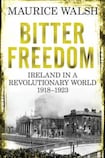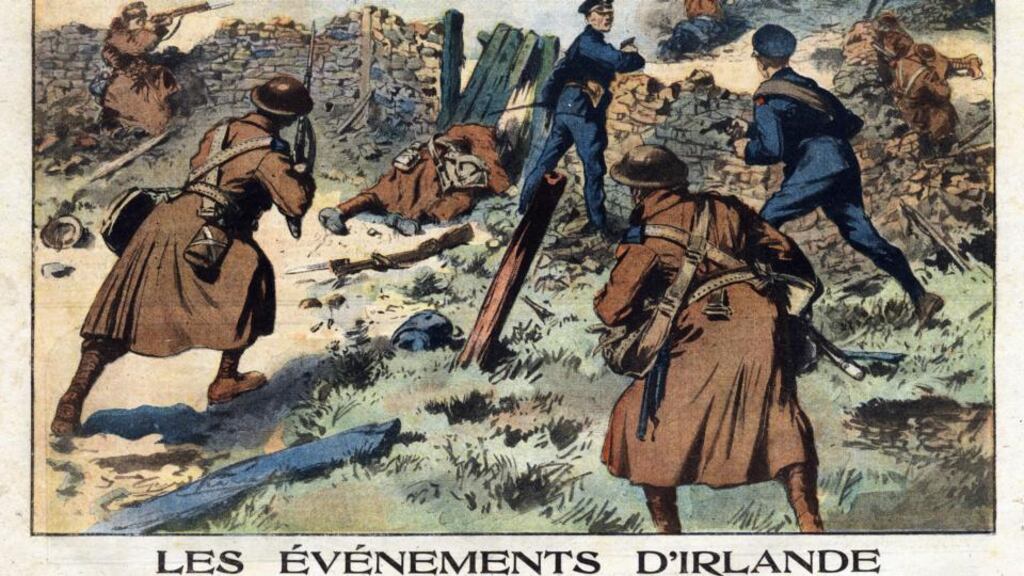
One of the reasons why Joe Lee's seminal Ireland 1912-85: Politics and Society caused a stir when published in 1989 was because of his determination to raise questions about the Irish experience of the 20th century in a comparative context; what he referred to as "a shift in the angle of approach".
While acknowledging Ireland’s distinctiveness, he insisted, “comparative perspective can illuminate our understanding of the Irish condition”. He provided, for example, bountiful references to Finland. In relation to the Irish Civil War, he pointed out that “the most apposite analogy appears to be with the Finnish civil war of 1918: This took place in a newly independent country with the same population as the Free State. But it claimed far more victims. Even if the probably exaggerated estimate of 4,000 Irish casualties be accepted, this still falls far below the 25,000 Finnish fatalities”.
Historians of the Irish revolution have been reluctant to follow Lee’s advice about comparative perspectives, which is why both the premise and the promise of Maurice Walsh’s new book are important. Given the variety of inward-looking books on the revolutionary period, it is intriguing to read Walsh’s declaration that developments in Europe and the United States in the early 20th century influenced “the attitudes and expectations of combatants and civilians” in Ireland at that time, and that his aim is to excavate the “new language of the Wilsonian world”, a reference to US president Woodrow Wilson’s rhetoric about national claims, and how “he made it respectable to be anti-imperialist”.
Civilisation in turmoil
Walsh promises to move beyond the telling of the Irish revolutionary tale from “within an Anglo-Irish context”, by seeing Ireland “as part of a civilisation in turmoil”.
But this aspiration is not delivered on to any great extent. The outside world is often mentioned, but too frequently just in passing. Instead of a new, fuller portrait, brief sketches are offered that remind us of a wider context but are not developed enough for the reader to feel much the wiser as to what precisely was international about the Irish experience and how its revolution compared to those elsewhere.
Walsh is a fine writer and has a novelist’s feel for pace and colour; he bolsters his account with good storytelling and well-chosen asides, but apart from delving into some diaries, newspapers and a small pool of memoir and personal testimony, such as that offered by Ibrahim Rashad, an Egyptian visitor to Ireland in 1919, he does not bring many new perspectives born of original research.
This, rather, is a book that, quite skilfully, distils and synthesises the extensive existing literature on this period. It is an accessible and intelligent narrative and serves as a good introduction to a vexed and complex period, and for that, the author deserves considerable credit.
At the outset of the War of Independence, some champions of an Irish republic, including Erskine Childers, were conscious of the need to place Irish rights and demands internationally; Childers described Ireland as “the last unliberated white community on the face of the globe”.
‘Crusading reporters’
To hone this message, journalists from outside Ireland were courted by Sinn Féin and much propaganda was built around the idea, enunciated by the first Dáil, that Ireland believed in the “fundamental principles of international law”.
Exploring the archive of Sinn Féin propagandists and government ministers in the National Archives would have generated a much more textured sense of how propaganda was conceived and communicated. Though foreign journalists are often mentioned as covering developments in Ireland – indeed, as “the crusading reporters”– who were they and how many? We get scant detail.
Ireland’s status in the grander scheme of things was underlined by the attempt by Sinn Féin to get a hearing at the international peace conference in Paris in 1919; Seán T O’Kelly, part of a three-man Irish delegation, found himself “trudging back to his shabby hotel” unlike the British delegation which had “more than 400 officials, advisers, clerks and typists”.
De Valera experienced much more opulence on his US visit from 1919-20, but not the recognition he wanted for the Irish Republic, and there is interesting material here on the wider issue of race relations and the hostile reaction to de Valera drawing comparisons between Ireland and Cuba.
Walsh examines various aspects of the war of independence, including the IRA’s campaign, the plight of the RIC and “the swift corrosion of their shared understanding with people among whom they lived and worked”. The frantic pace of the conflict in Dublin is documented, at the same time that the city witnessed the opening of four new cinemas, almost all exhibiting American films. Music, boxing, theatre and dancing also continued, and Walsh provides revealing nuggets about these leisure and recreational experiences.
While space is devoted to the Labour movement and the fears that “Bolshevism was in the air”, little information is offered on how the Irish labour movement compared with its international peers. In relation to the Black and Tans, we are told of a broader international context for paramilitary forces to restore order in trouble spots, but while the example of the Spanish force to put down the Berbers is given, there is little elaboration or comparison.
There are detailed and vivid descriptions of the impact of violence and its crescendo, orchestrated by "self-possessed weather beaten young men" with interesting observations from writer Wilfrid Ewart's A Journey in Ireland and observations from visiting mountaineer George Mallory ("they believe in the faith of their idealism"). But how the Irish conflict impinged on the wider world is not teased out sufficiently and there is a basic contradiction between the following two assertions within 10 pages of each other: "far from being ignored, the Irish conflict now attracted world attention" and "not very many people were paying attention to Ireland".
There is interesting material on the “moral exhaustion” that pervaded Dublin Castle, the pressures in England generated by the Peace with Ireland Council and colourful human details about the Anglo-Irish Treaty negotiations.
International example
Walsh underlines how, after the signing of the treaty, the provisional government grasped the importance of propaganda and international example. Hugh Kennedy, the legal adviser to the government, suggested ruthless opposition to the republicans was needed: “his example was the crushing of the revolutionary uprising in Weimar Germany four years earlier”. But what had that involved and how valid was this analogy? We are not told.
Certainly, Walsh captures well the determination to carry on with entertainment during the civil war: 2,000 spectators filled the La Scala theatre in Dublin to watch Battling Siki, the light-heavyweight boxing champion of the world, defend his title as warfare was waged on the streets outside. This also demonstrated to outside observers that the republicans were losing the civil war, or in the words of the New York Times, it "proved conclusively how tightly the government forces held the reins".
Walsh also highlights how Kevin O’Higgins, as the new minister for home affairs, was preoccupied with the Free State’s reputation internationally, so it would not “be classed with the nigger and the Mexican as a people unable to govern themselves”. But just what were the parallels between the Irish and Mexican experiences of revolution during this era, if any? Again, no answer is attempted.
This book is an often vivid introduction to some of the internal dynamics of the Irish revolution, but it does not transform analysis of this period to the extent promised.
Diarmaid Ferriter is professor of Modern Irish history at University College Dublin and author of A Nation and not a Rabble: The Irish Revolution, 1913-23 (Profile)













